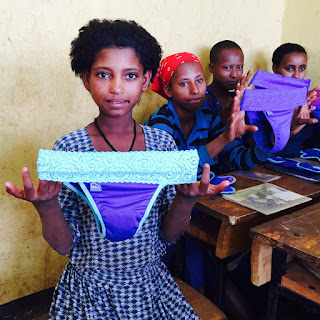Empowering Women Through Their Education
Many girls in developing countries are not receiving the safe, sanitary education that they deserve. Unsanitary conditions prevent girls from attending school due to this basic need not being met. Approximately 18% of girls do not attend school due to these conditions (Central Asia Institute, 2018). Unsafe neighborhoods also impact school attendance due to fear. For example, during Malala Yousafzai’s fight to receive an education for herself, she was shot in the head by a Taliban leader who disagreed with her campaign (Malala Fund, 2022). It is instances like this that prove the dangers that can come with girls obtaining their education. Safety and sanitary conditions can prevent attendance from young girls.
Stakeholders involved in helping girls receive an education value the long term skills that come with it (Commit2Change, n.d.). They value girls learning communication skills, technology skills and presentation advice for future jobs (Commit2Change, n.d.). Specific training is important for most stakeholders to ensure educators are fully equipped to provide a quality education for students (Commit2Change, n.d.). It is important that girls who are most vulnerable are able to build their self worth (Commit2Change, n.d.). In comparison to these long term skills, one initiative of the 17 Sustainable Development Goals is to provide lifetime learning to students (GVI, n.d.).
Stakeholders and activists need to address why schools are not providing girls with a clean, safe environment. Their own basic needs are not being met. If girls were able to attend school without the fear of being hurt by neighborhood violence and receive sanitary washing conditions, countries would benefit immensely (Crosby, 2018). A nation’s progress and economy would only enhance if girls received an education because they have a better opportunity to receive a high-paying job (Crosby, 2018). There is an increase of 25% to a woman's income with each additional year of secondary schooling she receives, contributing to the economy (Crosby, 2018). If all girls received a secondary education, countries could prevent the death of approximately 3 million children (Crosby, 2018). Also, we could prevent mal-nutritioned children and their stunted growth if more girls were educated (Crosby, 2018). Girls, globally, need their country to understand the shared benefit that comes from educating them. To provide this education, we must ensure schools are safe and sanitary, or else girls cannot attend. Basic needs are essential and must be met initially.
If you are an educator or are a part of any school administration, you can help make the small changes necessary to help educate girls! Girls everywhere are in serious need of a school environment that is safe and sanitary. I need your help implementing strategies to ensure your school has both necessities! Please share with me the experiences at your own school that have prevented girls from receiving a safe or sanitary education. I am challenging you to create a volunteer group at the school you work at that involves the students and other faculty members. In this group, please ask for donations that you can use to purchase sanitary products for girls at school or to pay for a janitorial system that can ensure a clean environment! It is important to raise awareness throughout the community, so feel free to hang up posters to advocate for the group and its efforts! Fundraising can help provide safe and sanitary conditions for girls.
References
Central Asia Institute. (2018). Improving Girls’ Education in Developing Countries: Creating a Better Future, One Life at a Time. Central Asia Institute. https://centralasiainstitute.org/improving-girls-education-in-developing-countries/.
Commit2Change. (n.d.). Why Girls’ Education? Commit2Change. https://www.commit2change.org/girls-education?gclid=CjwKCAjwrqqSBhBbEiwAlQeqGt1YgcZzDStJFJbGfU5zyoFu73rpCypNAF-FOsrQv7i5QNK42acd7BoCKNgQAvD_BwE.
Crosby, J. (2018). Top 10 Facts about Girls’ Education in Developing Countries. The Borgen Project. https://borgenproject.org/top-10-facts-about-girls-education-in-developing-countries//.
Malala Fund. (2022). Malala’s Story. Malala Fund. https://malala.org/malalas-story?sc=header.
GVI. (n.d.). Goal 4-Quality Education. GVI. https://people.gviusa.com/goal-4-quality-education/?utm_source=google&utm_medium=cpc&utm_campaign=us-people-projects&utm_term=&utm_content=hybrid&gclid=Cj0KCQjw3IqSBhCoARIsAMBkTb018JDAAr-26pJlJlT2ehPZThqvGK05qmbEfNnEbqYIE1h3l1ousioaArn1EALw_wcB.
Media Sources






Comments
Post a Comment